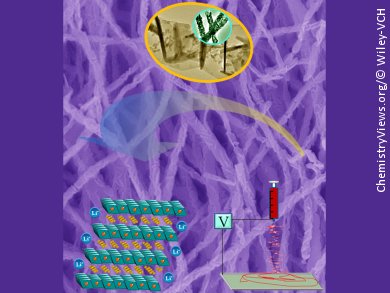1D hierarchical structures that possess a large specific surface area for high activity, and an excellent ability for fast ion diffusion and electron transportation are suitable candidates for electrode materials in lithium ion batteries (LIBs).
By using a simple and convenient electrospinning technique combined with suitable calcination treatment, Shengjie Peng and Madhavi Srinivasan at Nanyang Technological University, Singapore, have successfully prepared hierarchical CaCo2O4 nanofibers (CCO-NFs). They found that the morphology of these CCO-NFs, that is, nanoplates-in-nanofibers structure or hierarchical nanofibers and nanoplates, could be controlled by adjusting the calcination temperature. When they tested the hierarchical materials as anodes for LIBs, they observed an excellent cycling performance of 650 mAh g–1 after 60 cycles at a current of 100 mA g–1 and a rate capability much superior to that of the nanoplate-in-nanofiber couterparts.
Peng and Srinivasan believe that this simple and cost-effective methodology could be extended to the preparation of other structure-tunable metal oxide nanomaterials with enhanced lithium storage properties, which in turn can be used as promising electrodes for high-performance LIBs.
- Electrospun Hierarchical CaCo2O4 Nanofibers with Excellent Lithium Storage Properties,
Linlin Li, Shengjie Peng, Yanling Cheah, Yahwen Ko, Peifen Teh, Grace Wee, Chuiling Wong, Madhavi Srinivasan,
Chem. Eur. J. 2013, 19, 14823–14830.
DOI: 10.1002/chem.201302849


